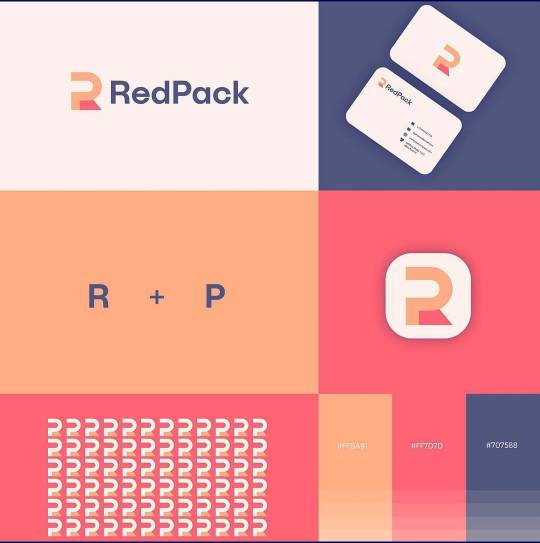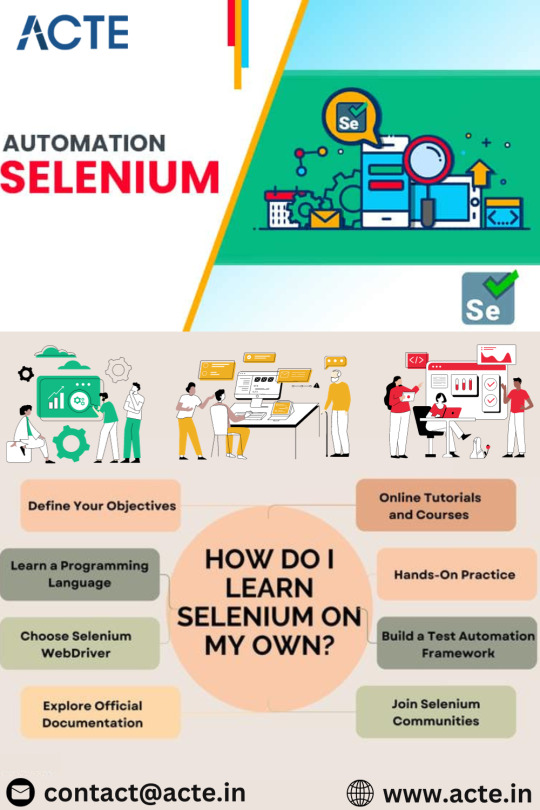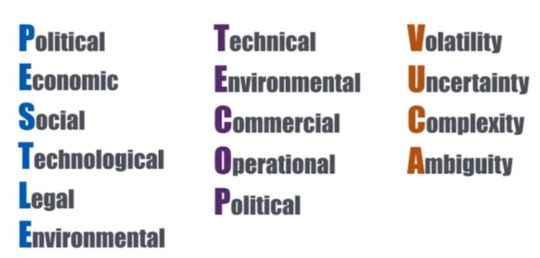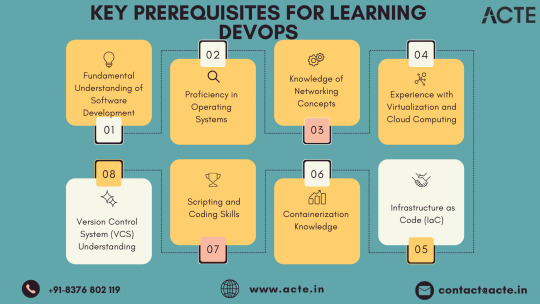#online training
Text
Hi Nigel








18 notes
·
View notes
Text
Revolutionizing Software Development: Unveiling the Transformative Impact of DevOps as a Service
In the dynamic realm of software development, the adoption of DevOps as a service (DaaS) has emerged as a revolutionary force, reshaping the fundamental dynamics of how organizations conceive, construct, and manage their software ecosystems. This transformative approach brings a host of advantages, fundamentally altering the collaborative, innovative, and delivery landscape. Here are seven pivotal benefits encapsulating the essence of embracing DevOps as a service:

1. Swift Time-to-Market Acceleration: DevOps as a service functions as a catalyst, propelling the software development lifecycle into unprecedented speeds. Streamlined and automated processes facilitate quicker and more frequent releases, granting organizations a competitive edge by swiftly introducing new features and updates to the market.
2. Reinforced Collaboration Framework: At its core, DevOps champions a culture of collaboration, and DevOps as a service takes this ethos to new heights by dismantling traditional silos between development and operations teams. The heightened communication and cooperation create an integrated and efficient workflow, fostering shared responsibility across the software delivery spectrum.
3. Elevated Software Quality and Reliability: Automation, a cornerstone of DevOps as a service, especially in testing and deployment, ensures uniform and dependable software releases. This automated precision results in superior code quality, diminished errors, and an overall elevation in the reliability of software systems.
4. Strategic Cost-Efficiency: By automating repetitive tasks, DevOps as a service strategically optimizes resource usage, leading to tangible and substantial cost savings. The reduction in manual efforts, coupled with astute infrastructure management, translates into financial advantages for organizations keen on maximizing efficiency.
5. Unparalleled Scalability and Flexibility: A defining feature of DevOps as a service is its innate scalability, allowing organizations to seamlessly adjust resources based on demand fluctuations. This unparalleled flexibility ensures optimal performance without incurring unnecessary infrastructure costs, making it an ideal fit for businesses navigating varying workloads.

6. Streamlined Deployment Efficiency: Automation within the deployment pipeline is a hallmark of DevOps as a service. By eradicating manual interventions, this approach reduces deployment errors and minimizes downtime, creating a more efficient, reliable, and streamlined deployment process.
7. Empowered Focus on Innovation: Liberated from routine tasks through automation, teams can now channel their efforts into innovation. DevOps as a service empowers organizations to invest time and resources in developing new features, refining user experiences, and positioning themselves as pioneers in a competitive market.
In conclusion, the incorporation of DevOps as a service heralds a revolutionary shift in the conventional approach to software development. It transcends traditional boundaries, fostering collaboration, innovation, and efficiency. As organizations navigate the intricate digital landscape, DevOps as a service emerges as a transformative force, offering a strategic advantage for those poised not only to adapt to technological advancements but to lead the charge in delivering impactful, high-quality software solutions.
4 notes
·
View notes
Text
youtube
Watch the American Climate Leadership Awards 2024 now: https://youtu.be/bWiW4Rp8vF0?feature=shared
The American Climate Leadership Awards 2024 broadcast recording is now available on ecoAmerica's YouTube channel for viewers to be inspired by active climate leaders. Watch to find out which finalist received the $50,000 grand prize! Hosted by Vanessa Hauc and featuring Bill McKibben and Katharine Hayhoe!
#ACLA24#ACLA24Leaders#youtube#youtube video#climate leaders#climate solutions#climate action#climate and environment#climate#climate change#climate and health#climate blog#climate justice#climate news#weather and climate#environmental news#environment#environmental awareness#environment and health#environmental#environmental issues#environmental justice#environment protection#environmental health#Youtube
4K notes
·
View notes
Text
#Learning Management System#LMS#Learning Management Software#Online Education#Software Training#Online Tutorial#IT Tutorial#Online Course#Online Training#Online Learning
2 notes
·
View notes
Text
sap sd online training
Master SAP SD online training. Unlock the power of SAP Sales and Distribution through expert-led courses. Learn key modules, enhance your skills in order management, pricing, and more. Join now for hands-on experience, real-world scenarios, and advance your career in SAP SD. Enroll in our online training for in-depth knowledge and practical skills in SAP SD that propel you to success in the dynamic world of SAP solutions.
2 notes
·
View notes
Text
#linkedin#learning#education#courses#creative#technology#business#business skills#professional#training#online training
20 notes
·
View notes
Text
Navigating Food Safety Training in Spanish
In the diverse and dynamic landscape of the food industry, ensuring a comprehensive understanding of food safety practices is a universal priority. This blog delves into the critical realm of food safety training in Spanish, exploring the significance of obtaining a food handler certification in Spanish and the impact of specialized Spanish food handling courses.

Unlocking Access with Food Handler Certification in Spanish
The importance of food handler certification transcends language barriers. Recognizing the linguistic diversity in the food industry, the availability of certification courses in Spanish becomes a game-changer. It not only meets regulatory requirements but also ensures that individuals responsible for food handling truly grasp the intricacies of safety protocols.
Navigating the Landscape of Food Safety Training in Spanish
Food safety is a collective responsibility, and effective communication is key to fostering a culture of compliance. Food safety training in Spanish caters to a significant portion of the workforce, facilitating a deeper understanding of hygiene practices, proper food handling techniques, and the nuances of maintaining a safe environment in Spanish-speaking kitchens.
The All-Encompassing Spanish Food Handling Course
Spanish food handling courses go beyond the basics, offering a holistic approach to education. These courses cover a spectrum of topics, including hygiene standards, temperature control, cross-contamination prevention, and the latest regulatory guidelines—all presented in the Spanish language. The aim is not just certification but a thorough comprehension of the principles that safeguard both consumers and the industry.
Key Features of Spanish Food Handling Courses:
Language Accessibility: Conducted entirely in Spanish, these courses ensure that participants can fully engage with the material, grasping complex concepts with ease and confidence.
Cultural Relevance: Spanish food handling courses recognize the cultural context of the learners. This ensures that the training is not only linguistically accessible but also resonates with the cultural practices prevalent in Spanish-speaking culinary environments.
Interactive Learning Modules: To enhance engagement and knowledge retention, these courses often incorporate interactive elements such as quizzes, scenarios, and multimedia content, making the learning experience more dynamic and effective.
Why Invest in Food Safety Training in Spanish?
Legal Compliance: In regions with a significant Spanish-speaking workforce, providing training in their native language is not just good practice but often a legal requirement.
Enhanced Communication: Effective communication is at the heart of food safety. Training in Spanish ensures that instructions, guidelines, and best practices are clearly understood, reducing the risk of misunderstandings that could compromise safety.
Cultivating a Safety Culture: By making training accessible to all, regardless of language, businesses contribute to fostering a culture of safety, responsibility, and professionalism in their kitchens.
Conclusion: Empowering Safety through Linguistic Inclusivity
In a globalized culinary landscape, linguistic inclusivity is paramount. Food safety training in Spanish, coupled with food handler certification in Spanish, not only meets regulatory demands but also reflects a commitment to the well-being of both consumers and those working in the food industry. By embracing diversity in language, we fortify the foundations of a safer, more resilient food service community.
#coggno#online courses#food safety#food protection#food#online training#online learning#spanish#food handler
2 notes
·
View notes
Text

Creative R + P logo ♡
Get your premium logo. Contact: [email protected]
#logo design#investor#geometry#make money online#success#monogram#initials#letterdesign#typedesign#business#entrepreneur#london#united kingdom#birmingham#small biz#startup#online training#online marketing#online business
32 notes
·
View notes
Text
Embarking on the Selenium Learning Journey: A Guide to Web Automation Mastery
Learning Selenium and mastering web automation is an empowering journey that opens doors to diverse opportunities in the realm of software development and testing. Embracing Selenium's capabilities becomes even more accessible and impactful with Selenium Training in Bangalore. This training equips individuals with the skills and knowledge to harness the full potential of Selenium, enabling them to proficiently navigate web automation challenges and contribute effectively to their respective fields. In this comprehensive guide, we will walk you through the essential steps to learn Selenium on your own, from understanding basic programming concepts to building practical projects and engaging with the Selenium community.

Understand Basic Programming:
Before immersing yourself in the world of Selenium, it's crucial to establish a solid foundation in a programming language. Whether it's Java, Python, C#, or Ruby, a strong grasp of programming concepts is essential for crafting effective Selenium scripts. This initial understanding sets the stage for your journey into web automation.
Set Up Your Development Environment:
Creating a conducive development environment is the next pivotal step. Install the necessary tools, including the Java Development Kit (JDK), an Integrated Development Environment (IDE) such as Eclipse or IntelliJ, and the Selenium WebDriver library. A well-configured environment ensures a seamless and efficient Selenium development process.
Explore Selenium WebDriver Basics:
With your environment set up, it's time to delve into the basics of Selenium WebDriver. Begin by learning how to launch web browsers, navigate through web pages, and interact with different elements like buttons and text fields. Hands-on practice is paramount at this stage, allowing you to gain practical experience and build a solid foundation in Selenium.
Master Locators and Synchronization:
A key aspect of Selenium proficiency is mastering the art of locating web elements using various locators such as ID, class name, XPath, and CSS selectors. Additionally, understanding synchronization techniques is crucial for handling dynamic web pages. Implementing waits ensures the reliability of your scripts, especially in scenarios where elements take time to load.
Build Practical Projects and Join Communities:
Apply your growing knowledge by working on practical projects. Start with a sample automation project and gradually introduce complexity to challenge yourself. Simultaneously, join online communities, forums, and groups dedicated to Selenium. Engage with fellow learners, ask questions, and share your experiences. Learning from a community provides valuable insights and support, enhancing your overall Selenium journey.

As you navigate the world of Selenium, remember that learning is an iterative process. Consistent practice, exploration of real-world scenarios, and engagement with the Selenium community will solidify your skills and propel you towards web automation mastery. Embark on this journey with enthusiasm, and soon you'll find yourself confidently navigating the exciting landscape of Selenium and web automation. To unlock the full potential of Selenium and master the art of web automation, consider enrolling in the Best Selenium Training Institute. This training ensures that individuals gain comprehensive insights, hands-on experience, and practical skills to excel in the dynamic field of web testing and automation.
2 notes
·
View notes
Text

Build your team’s knowledge of food safety & hygiene with Safety Bug Training. we are recognised as a leading authority and an established provider in the field of food safety training. Start Your Online Course Today!
2 notes
·
View notes
Text
Mastering Realism: A Comprehensive Guide to Creating, Texturing, Animating, and Rendering in Autodesk Maya
Autodesk Maya stands as a premier 3D computer graphics software that has been an industry standard for years. Its versatile capabilities have allowed artists, animators, and designers to bring their imagination to life in breathtaking detail. In this blog post, we will delve into the world of Maya, exploring how to create realistic models, texture them, animate scenes, and achieve stunning renders that captivate audiences.
Creating Realistic Models
The foundation of any 3D project in Maya is the creation of lifelike models. With its robust set of modeling tools, Maya empowers creators to shape their ideas into three-dimensional objects that mimic real-world counterparts. Whether it's character models, architectural designs, or intricate props, Maya's toolkit offers both polygonal and NURBS-based modeling techniques to suit various project needs.
Polygonal Modeling: This method involves building models by connecting vertices, edges, and faces to form complex shapes. Maya's polygon modeling tools provide precision and control, enabling you to sculpt organic or mechanical structures with ease.
NURBS Modeling: Non-Uniform Rational B-Splines (NURBS) offer a mathematical approach to modeling, which is particularly suited for creating smooth and curvilinear surfaces. This technique is often used for vehicles, product design, and architectural elements.
Texturing for Realism
Texturing breathes life into models, giving them the appearance of materials and surfaces found in the real world. Maya offers an array of tools and workflows for applying textures to models, simulating materials like wood, metal, fabric, and skin.
UV Mapping: Properly unwrapping a model's UVs is essential for applying textures accurately. Maya provides tools for efficient UV unwrapping, allowing you to paint or apply textures in 2D editing software before bringing them back into Maya.
Shader Networks: Creating realistic materials involves combining various texture maps within shader networks. Maya's Hypershade editor makes it simple to connect textures to shaders and simulate intricate material properties like roughness, reflectivity, and translucency.
Animating with Depth
Maya's animation capabilities open the door to dynamic storytelling and captivating visual experiences. From character animations to complex motion graphics, the animation tools in Maya cater to a wide range of creative ambitions.
Keyframing: Keyframing is the foundation of animation, allowing you to set specific poses and positions for objects over time. Maya's Graph Editor provides granular control over keyframes, easing in and out of motions for a more organic feel.
Rigging: Rigging involves creating a skeleton or structure within a model, allowing it to be manipulated like a puppet. Maya's robust rigging tools facilitate the creation of intricate character rigs, enabling movements that closely resemble real-life actions.
Rendering Brilliance
The final step in the 3D creation process is rendering—transforming your 3D scene into a stunning 2D image or animation. Maya's rendering capabilities are powered by Arnold, a sophisticated rendering engine known for its realism and efficiency.
Arnold Renderer: Arnold provides a physically accurate rendering process, simulating lighting, shadows, reflections, and global illumination. Its integration with Maya makes achieving photorealistic results more accessible than ever.
Render Settings: Maya's Render Settings give you full control over image resolution, quality, and effects. You can adjust settings to match your project's requirements, whether you're rendering for print, web, or animation.
Conclusion
Autodesk Maya has long been an essential tool for artists and creators seeking to bring their visions to life with unparalleled realism. With its powerful modeling, texturing, animation, and rendering capabilities, Maya empowers users to create lifelike scenes and characters that resonate with audiences. By mastering these techniques, you can unlock a world of creative possibilities and take your projects to new heights of visual excellence. Whether you're a seasoned professional or just starting on your 3D journey, Maya remains a valuable companion in your pursuit of digital artistry.
3 notes
·
View notes
Text
PESTLE, TECOP and VUCA
In the fast-paced and unpredictable world of business, staying ahead requires a keen understanding of the forces that shape our environment. As organizations strive to make informed decisions and minimize risks, three essential frameworks come to the forefront—PESTLE, TECOP, and VUCA
Let’s delve into the intricacies of PESTLE’s political, economic, social, technological, legal, and environmental…

View On WordPress
#Online Training#PMI#PMP#PMP Certification#PMP Exam#Project Management#Project Management Professional#Project Managers#Project Risk Management
5 notes
·
View notes
Text
youtube
Watch the American Climate Leadership Awards 2024 now: https://youtu.be/bWiW4Rp8vF0?feature=shared
The American Climate Leadership Awards 2024 broadcast recording is now available on ecoAmerica's YouTube channel for viewers to be inspired by active climate leaders. Watch to find out which finalist received the $50,000 grand prize! Hosted by Vanessa Hauc and featuring Bill McKibben and Katharine Hayhoe!
#ACLA24#ACLA24Leaders#youtube#youtube video#climate leaders#climate solutions#climate action#climate and environment#climate#climate change#climate and health#climate blog#climate justice#climate news#weather and climate#environmental news#environment#environmental awareness#environment and health#environmental#environmental issues#environmental justice#environment protection#environmental health#Youtube
4K notes
·
View notes
Text










Josh Goldy is damn sexy
4 notes
·
View notes
Text
DevOps Landscape: Building Blocks for a Seamless Transition
In the dynamic realm where software development intersects with operations, the role of a DevOps professional has become instrumental. For individuals aspiring to make the leap into this dynamic field, understanding the key building blocks can set the stage for a successful transition. While there are no rigid prerequisites, acquiring foundational skills and knowledge areas becomes pivotal for thriving in a DevOps role.

1. Embracing the Essence of Software Development: At the core of DevOps lies collaboration, making it essential for individuals to have a fundamental understanding of software development processes. Proficiency in coding practices, version control, and the collaborative nature of development projects is paramount. Additionally, a solid grasp of programming languages and scripting adds a valuable dimension to one's skill set.
2. Navigating System Administration Fundamentals: DevOps success is intricately linked to a foundational understanding of system administration. This encompasses knowledge of operating systems, networks, and infrastructure components. Such familiarity empowers DevOps professionals to adeptly manage and optimize the underlying infrastructure supporting applications.
3. Mastery of Version Control Systems: Proficiency in version control systems, with Git taking a prominent role, is indispensable. Version control serves as the linchpin for efficient code collaboration, allowing teams to track changes, manage codebases, and seamlessly integrate contributions from multiple developers.
4. Scripting and Automation Proficiency: Automation is a central tenet of DevOps, emphasizing the need for scripting skills in languages like Python, Shell, or Ruby. This skill set enables individuals to automate repetitive tasks, fostering more efficient workflows within the DevOps pipeline.
5. Embracing Containerization Technologies: The widespread adoption of containerization technologies, exemplified by Docker, and orchestration tools like Kubernetes, necessitates a solid understanding. Mastery of these technologies is pivotal for creating consistent and reproducible environments, as well as managing scalable applications.
6. Unveiling CI/CD Practices: Continuous Integration and Continuous Deployment (CI/CD) practices form the beating heart of DevOps. Acquiring knowledge of CI/CD tools such as Jenkins, GitLab CI, or Travis CI is essential. This proficiency ensures the automated execution of code testing, integration, and deployment processes, streamlining development pipelines.

7. Harnessing Infrastructure as Code (IaC): Proficiency in Infrastructure as Code (IaC) tools, including Terraform or Ansible, constitutes a fundamental aspect of DevOps. IaC facilitates the codification of infrastructure, enabling the automated provisioning and management of resources while ensuring consistency across diverse environments.
8. Fostering a Collaborative Mindset: Effective communication and collaboration skills are non-negotiable in the DevOps sphere. The ability to seamlessly collaborate with cross-functional teams, spanning development, operations, and various stakeholders, lays the groundwork for a culture of collaboration essential to DevOps success.
9. Navigating Monitoring and Logging Realms: Proficiency in monitoring tools such as Prometheus and log analysis tools like the ELK stack is indispensable for maintaining application health. Proactive monitoring equips teams to identify issues in real-time and troubleshoot effectively.
10. Embracing a Continuous Learning Journey: DevOps is characterized by its dynamic nature, with new tools and practices continually emerging. A commitment to continuous learning and adaptability to emerging technologies is a fundamental trait for success in the ever-evolving field of DevOps.
In summary, while the transition to a DevOps role may not have rigid prerequisites, the acquisition of these foundational skills and knowledge areas becomes the bedrock for a successful journey. DevOps transcends being a mere set of practices; it embodies a cultural shift driven by collaboration, automation, and an unwavering commitment to continuous improvement. By embracing these essential building blocks, individuals can navigate their DevOps journey with confidence and competence.
5 notes
·
View notes
Text
#Learning Management Software#LMS#Learning Management System#Online Education#Software Training#Online Tutorial#IT Tutorial#Online Course#Online Training#Online Learning
2 notes
·
View notes
Text

2 notes
·
View notes
Text
Endtrace Training : Empowering the Technology world
Welcome to Endtrace Training, where technology meets passion and learning never stops! We're a team of tech enthusiasts and educators who are dedicated to empowering the next generation of software professionals. Whether you're just starting out or looking to upskill, our courses will help you stay ahead of the curve and achieve your career goals. But let's not get ahead of ourselves - let's talk about who we are and why we do what we do.
Endtrace was founded with a simple mission: to bridge the gap between classroom learning and real-world practice. We believe that the best way to learn is by doing, so our courses are designed to be hands-on and project-based, giving you the skills and experience you need to succeed in your career.
Our instructors are industry experts with years of experience, and they're passionate about sharing their knowledge with you. They're not just teaching you the latest technologies and best practices, they're also sharing their stories and experiences to help you understand the context and real-world applications of what you're learning.
Training
Software Testing
Web development
Online Marketing
Trending
Network Security
At Endtrace, we don't just teach technology, we teach passion. We believe that if you're passionate about what you're doing, you'll never stop learning and growing, and that's why we encourage our students to pursue their interests, ask questions, and explore new horizons. We're not just a training institute, we're a community of learners, and we're here to support you every step of the way.
So, there you have it - a brief introduction to Endtrace Training. We hope you'll join us on this exciting journey, and discover a world of new possibilities. Remember, technology is not just a skill, it's a passion, and at Endtrace, we're here to help you ignite that spark! Read more on LinkedIn medium
Contact Us
Thank you for choosing Endtrace as your source for software technology training. We’re excited to be a part of your journey to a successful career! Read Endtrace Blog
[email protected] | +91 9703181624
5 notes
·
View notes